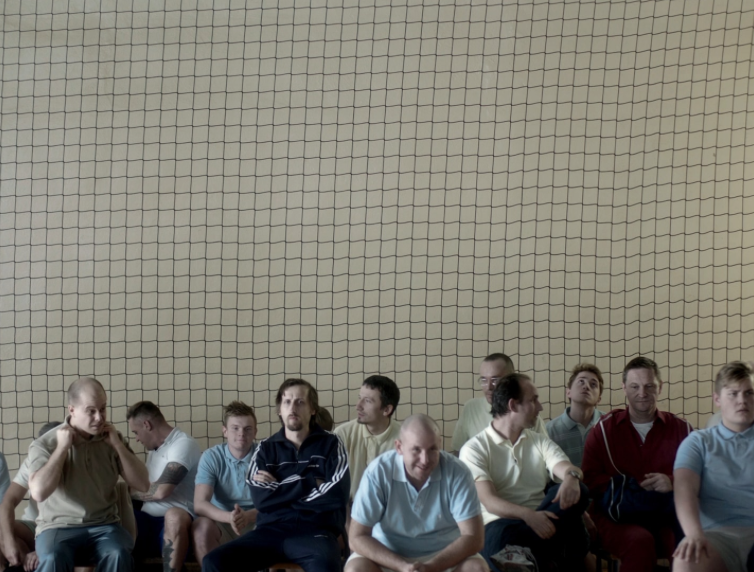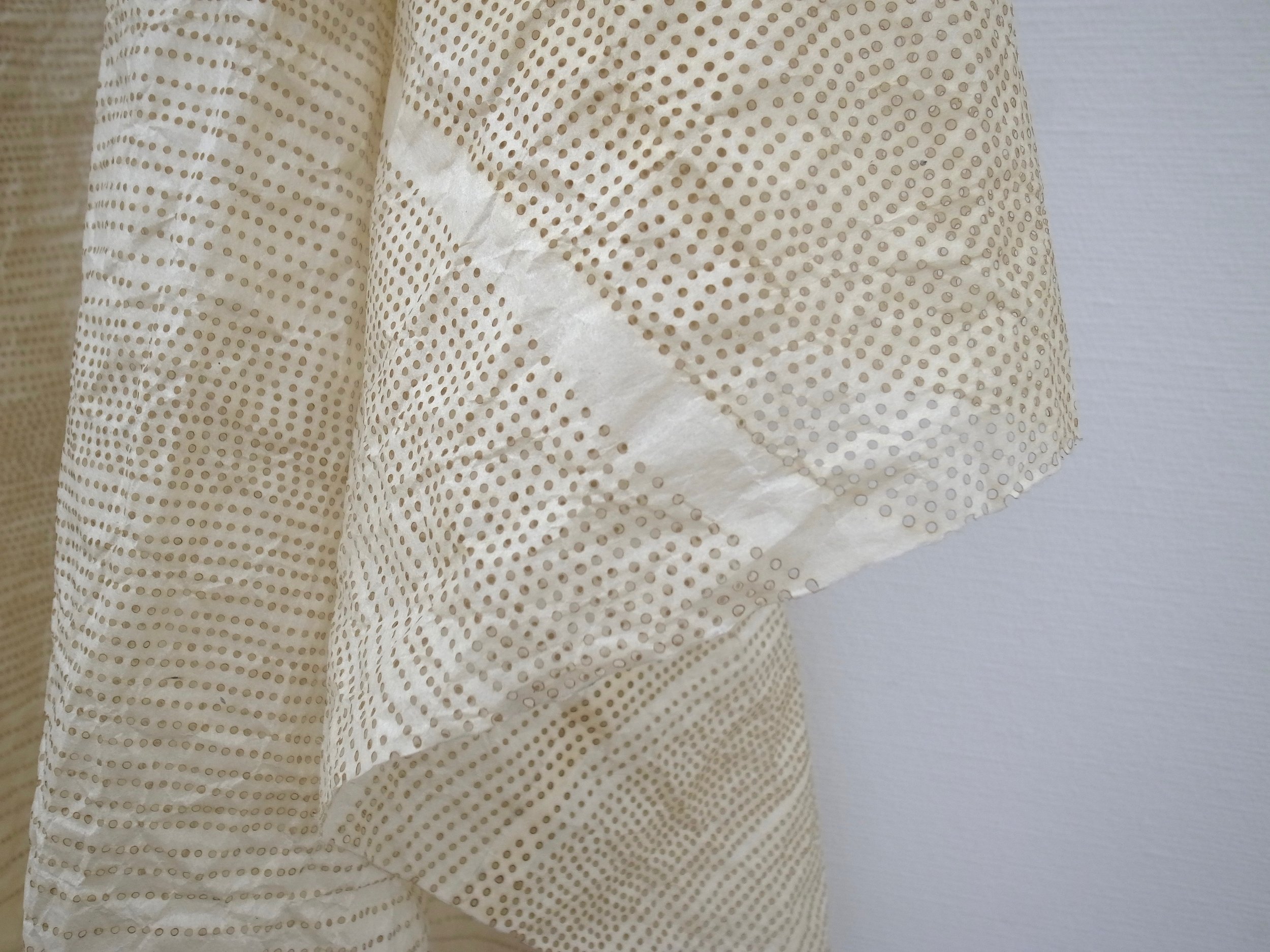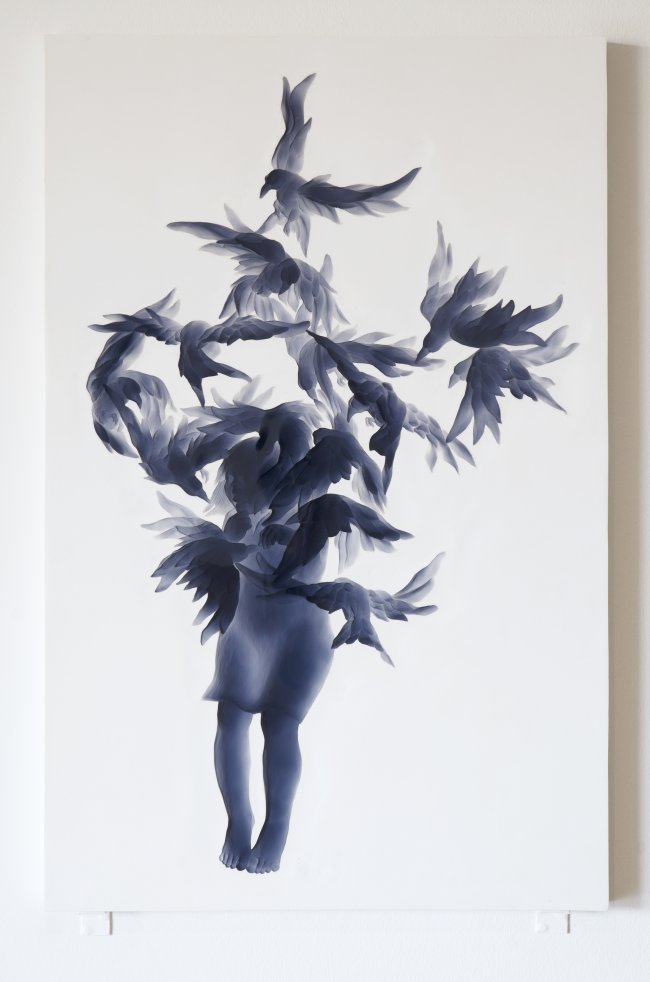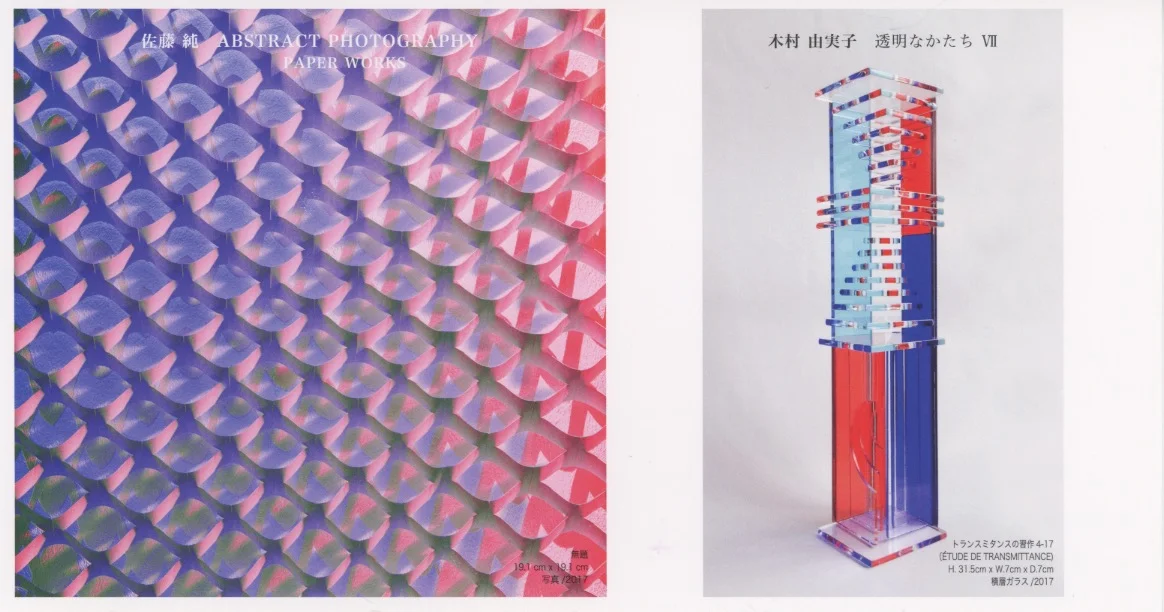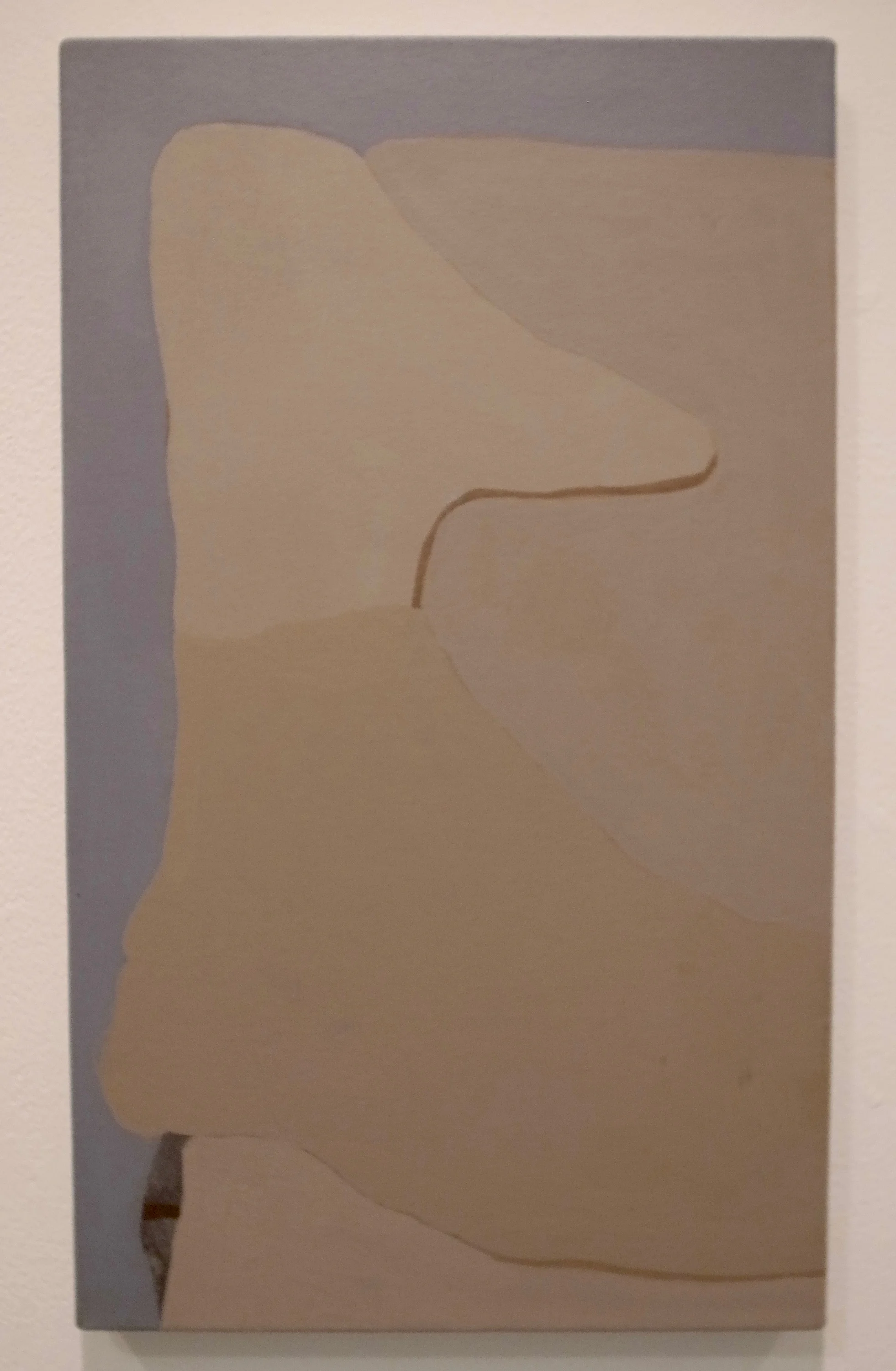As usual, I made a tentative plan earlier in the week for my gallery and museum hopping, but as always things change. After seeing a number of posts on Thursday night about the 10th Yebisu International Festival for Art and Alternative Visions, I decided that would be my starting point since the theme was "Mapping the Invisible" where there could be some potential discoveries. The main venue is the Tokyo Photographic Art Museum in Ebisu and I began to work my way through the works which were mostly video installations. Given that I had arrived at the museum just shortly after opening, I had plenty of time and decided to try and give each work my fullest attention. After almost two hours of wandering through the three floors of works, here are a handful that stick in my mind.
Gabriel Herrera Torres' "How to Reach God Thru Proper Exercise" single channel video offered a strange yet absorbing experience centered around a Polish recreation centre, dream transference, and color blindness.
The Cuttingly Fairy Photographs and Related Materials was by far the most fascinating work in the exhibition. I had not known about these photographs and the story behind them. From the Museum of Hoaxes website.
"In 1920 a series of photos of fairies captured the attention of the world. The photos had been taken by two young girls, the cousins Frances Griffith and Elsie Wright, while playing in the garden of Elsie's Cottingley village home. Photographic experts examined the pictures and declared them genuine. Spiritualists promoted them as proof of the existence of supernatural creatures, and despite criticism by skeptics, the pictures became among the most widely recognized photos in the world. It was only decades later, in the late 1970s, that the photos were definitively debunked."
The exhibition consisted of the five photographs along with various ephemera relating to those photographs, other fairy photographs, and research that debunked the authenticity of those photographs. As it turns out, the Cottingley fairies in the photographs were cut outs from an illustration book. Of the five photographs on exhibit, four of the photographs visibly included these cut outs. But the fifth one "Fairies and Their Sun-bath" was much more intriguing and ambiguous and which Frances insisted as genuine.
From the 5-Minute History website
This analogue photographic deception that took place almost 100 years ago resonates with me because of the fervour that it caused during that time and how the images were widely accepted as genuine and that it took decades to discover the true nature of the images. Our current digital technologies offer the same dilemma in terms of trying determine what is genuine and what is altered. A century from now, or sooner, will we see the images from this period more clearly for what is genuine and what is altered?
Mako Idemitsu's "At Yukigaya 2" single channel video was interesting for me in terms of materiality. The work utilised high contrast film to provide stark contrast and abstraction to images from nature.
Natsumi Aoyagi's "Incubation Diary" installation gave me the opportunity to contemplate the presentation of research-based work and documentation.
I have mixed feelings about the installation. I do like the specimens or materials enclosed in an acrylic case, but I also find it inaccessible for the viewing audience. The non-ordered display of the acrylic boxes felt like a good way to move the viewer around the space. On the other hand, having the installation displayed with the back side of a constructed wall in all its unfinished glory was confusing to me. Seeing this installation made me think that I have to look more at the display strategies that Mark Dion and Fred Wilson have employed in their work.
The final work from the 10th Yebisu International Festival for Art and Alternative Visions that I wanted to mention was a collaborative research project by Natacha Nisic and Ken Daimaru into "itako" who are blind women who became spiritual mediums through apprenticeship. This video installation centres on the last itako, Take-san and her stories. More of a documentary to me, I found it deeply fascinating to discover spiritual mediums in a Japanese context. The works sits well next to my current fascination with the spirits and the after life.
From the 10th Yebisu International Festival for Art and Alternative Visions, I headed over to the National Art Centre Tokyo to see the 16th New Artist Unit exhibition and the DOMANI exhibition. I headed into the 16th New Artist Unit (also known as NAU21) exhibition first and I was struck by the size of the exhibition space and the size of the works in this exhibition. Over fifty artists displayed their works in this exhibition with most artists having a pair of works. As with these larger exhibitions, there is a bit of something for everyone. I found a handful of works to be interesting and lingered over those for a bit although most did not relate to my studio practice. My favourite piece in that regards would be Satoko Shimokawara's paper dress which was pocked with seemingly thousands of holes obsessively made by burning through the material.
From the NAU21 exhibition, I headed over to the DOMANI exhibition which I have not seen for a couple of years. Keith Mori's architectural drawings made by stretching thread and gluing them directly to paper, canvas, or the wall was the highlight of the exhibition for me. I had a chance to take photographs, but it does not do the work justice. The smaller works were what drew me in and here is one of the pieces that was in the exhibition.
From Keita Mori's website
Michiko Nakatani's negative relief plaster sculptures in the shape of "paintings" filled with layered images of crows or ravens that are brought to life by filling in the negative space with different transparencies of dyed resin were an absolute feast for the eyes. Her work had me thinking about how one can and should continue to look for new ways to apply tried and true mediums.
I spent a good amount of time taking in the work by both these artists because I realised that photographing them would not give me a sense of what these works transmitted. If you are in Tokyo, I recommend stopping by to see the exhibition if only for these two artists.
From the National Art Centre Tokyo, I headed to another DOMANI-themed exhibition at the Hibiya Library & Museum entitles "Artists Meets Books" with another group of Japanese artists who have participated in the Program of Overseas Study for Upcoming Artists. It is always good to see the gorgeous works of Aiko Miyanaga.
Masahiro Hasunuma's multiple Kinora works were a pleasant discovery in terms of forms for an artist books. The Kinora is an predecessor to the motion picture projector in which hundreds of pages are animated by turning them against small steel plate. The best thing about it was discovering a Kinora about Ogijima which was the island in the Setouchi Inland Sea where I participated in the 2013 Setouchi Triennale. In the image below, you can see a picture of the Meon ferry that takes you to and from the island and Takamatsu port.
I finished my long day of gallery and museum hopping in Ginza. Tomo Hirai's "Pottery Fragments and Reminiscences" at the LIXIL Gallery had me thinking back to my Memory Walks eggshell drawings and thinking about future possibilities.
From a few other stops which included Gallery Natsuka and the Tokyo Institute of Photography 72Gallery, I finished up the day at the Okuno Buildings. As the elevator was being used for a delivery, I ambled my way up the stairs and took a leisurely peek around each floor. On the fourth floor, this postcard announcement lured me into Gallery 403.
In the gallery, I found a series of photographs by Jun Sato whom creates patterned and repeating models based on geometric forms and then photographs them to create works like you see in the above left. As it turns out, the glass object on the right is by Yumiko Kimura who also uses numerical sequences like the Fibonacci sequence and other geometric and mathematic patterns to create her works. They are a couple who are based in France and have been working for years in this field of geometric art. I had a chance to speak with both of them and learn more about MADI community in Europe. What is Madi art? From Wikipedia,
"Madí (or MADI) is an international abstract (or concrete) art movement initiated in Buenos Aires in 1946 by the Hungarian-Argentinian artist and poet Gyula Kosice, and the Uruguayans Carmelo Arden Quin and Rhod Rothfuss.
The movement focuses on creating concrete art (i.e., non-representational geometric abstraction) and encompasses all branches of art (the plastic and pictorial arts, music, literature, theater, architecture, dance, etc.). The artists in the Madí movement consider the concrete, physical reality of the art medium and play with the traditional conventions of Western art (for instance, by creating works on irregularly-shaped canvases). Artwork of Madí movement appeared in eight issues of its magazine, Arte Madí Universal, published between 1947 and 1954."
There is currently an exhibition of Madi artists in Kanazawa and Yumiko Kimura had a copy of the catalog and the work in the exhibition was gorgeous. I will not make it up to Kanazawa in time to see the exhibition, but I am hoping that Yumiko Kimura can find me a copy of the digital version and I will share some works at the time.
My final stop was Gallery Camellia to see the abstract paintings by Satoshi Yoshida who was in the gallery and we had a good conversation about making daily drawings, John Zurier, Laura Owens, Ingrid Calame, and Thomas Nozkowski. I am feeling a bit of an itch to getting back to painting or at least more brush-based work which might be evident in my current batch of Daily Drawings.
A long but fruitful day of gallery and museum hopping in which I managed to cover quite a range of works and ideas. My next planned day of gallery hopping is next Thursday although I do not expect it to be as intensive as this past Friday. I am hoping to see one or two exhibitions here and there before next Thursday.
